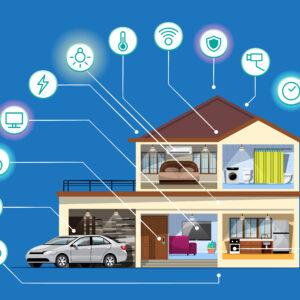Technology has changed the entire paradigm of retail business. Retailers can now thoroughly trail customer trends, facilitating them to figure out which items are enticing customers the most. Technology aids sellers to competitively price their items by doing a study of the other markets and their prices as well as their goods.
Some of the data-driven productivities and recent technology updates,supporting today’s retailers embrace the analytical inventory and demand prognostication, catalogue precision and perceptibility, supply chain management and optimization, Product traceability, and authentication. Logistics management, product placement in the store, and employee management.
An inventory control system is presently an elementary device for retail management. It empowers one to know what products a person has on hand and order, and how many of each piece he has received and sold off. Once set up, these systems repeatedly update the record when products sell or transfer from one location to another, from a barn to a shop. They also offer a variety of immediate data scrutiny tools to keep a note of the business. One of the most dynamic advanced technology updatesis that it controls the inventory completely. Just simply choose and see the goods by, price, brim, shelf life, UPCs. In minutes one can form new groups with hundreds of subsections based on size, design, colour, and style
Customers are king and retail business is no exception. Customers expect the businessman to be competent to tell them if they have a product in hand or the order process. They don’t want to delay while you stroll through the store or call up the warehouse. Having an electronic inventory network allows one to answer purchaser questions with just a few clicks. One can also scan the inventory held by various stores if the retailer has numerous locations. Automation of inventory control is also another form of technology update news,related to the digitisation of retail business space.
The electronic inventory system can remove over-ordering and under-buying by stating to each store’s sales history to calculate the optimal stock levels for each item. One can tell the system how many days of supply they wish, which they can adapt. Internal theft and costing blunders can eat up about 4% of the trade record. A transportable terminal offers much superior speed and correctness than manual counts. The system directly flags inconsistencies with chronicled inventory levels and confirms pricing, making it cooler to sense pricing errors and misplaced produce on the spot. Your inventory control system can suggest pricing and reductions within your pre-fixed parameters, and track the margins grounded on the prices he feeds in. It will also guarantee he is always alert of gross margins.
Even with special pricing offers, you never lose track of your margins. One can create different pricing for diverse stores across terrestrial regions. One can also pre-set concessions for end-of-season or other sales. The system endures tracing gross margin, counting the effects of discounts and favoured pricing.
Automated statistical forecasting systems are another advantage of technology, created for more planned and precise demand prediction. Past sales data, calculations, and forthcoming orders are all on one system. As a result, more precise forecasts can be set based on the entirety of this data. Every line manager can be given access to this forecasting data, fixing chain-wide input into the system. Forecasts can then be further attuned, considering every feature.










